
Wolfgang Amadeus Mozart
Complete (18) Sonatas for the piano (K.279-576) In Five CD Set
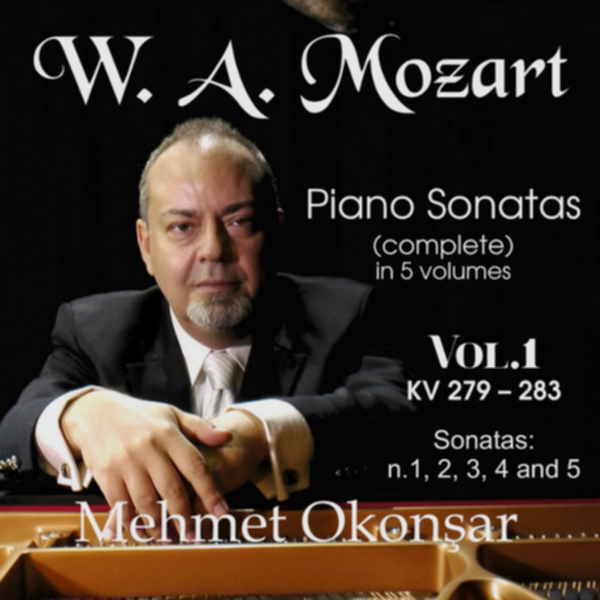
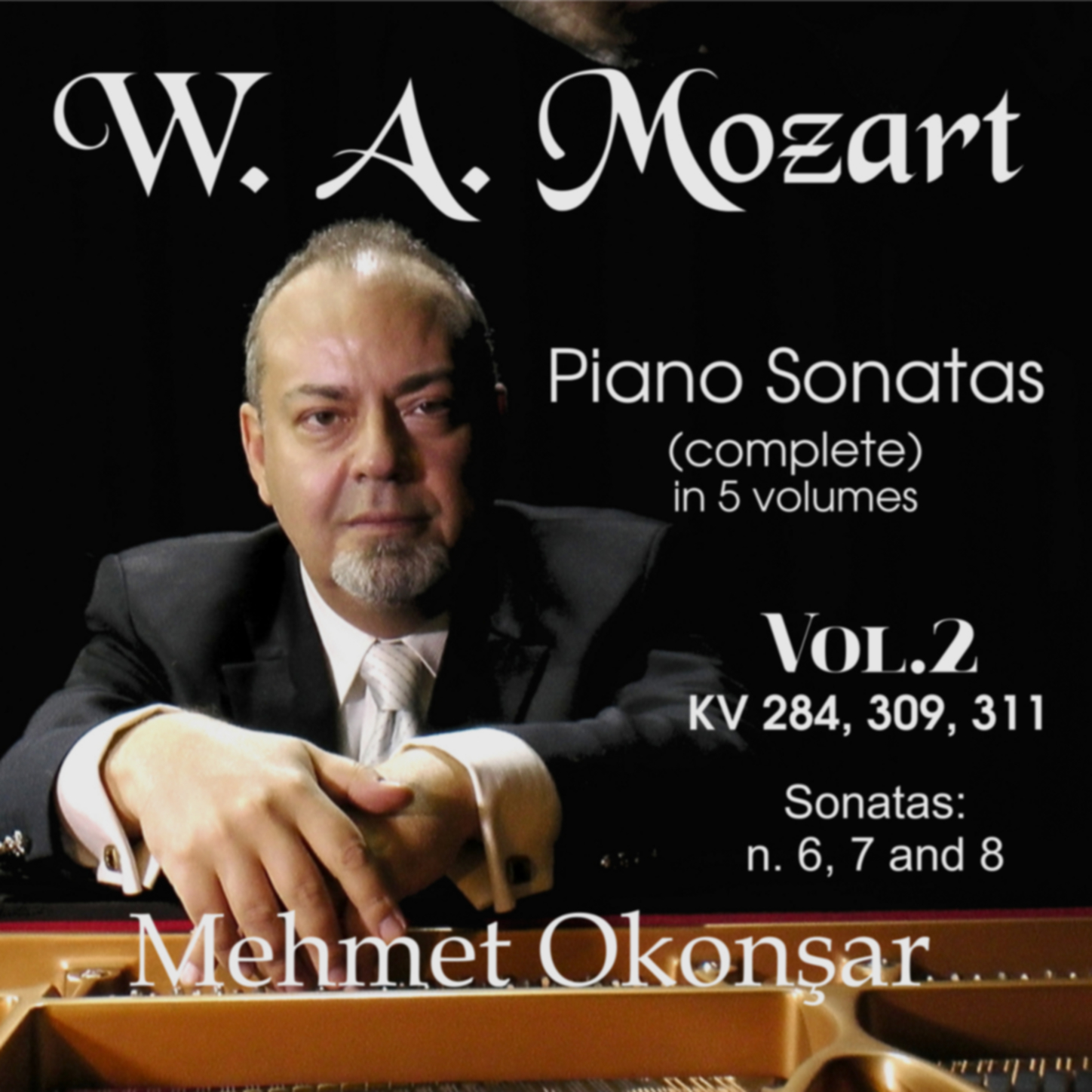
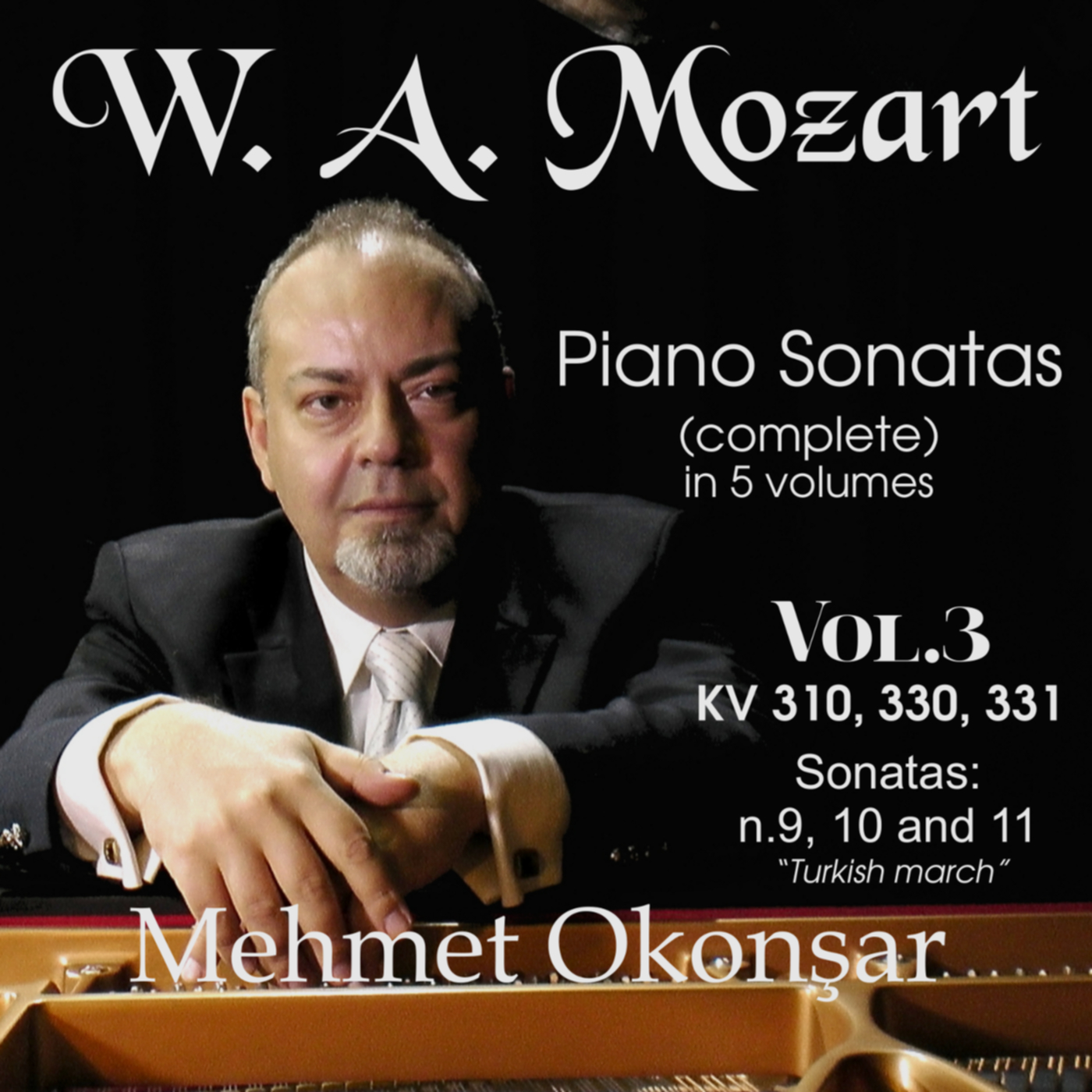
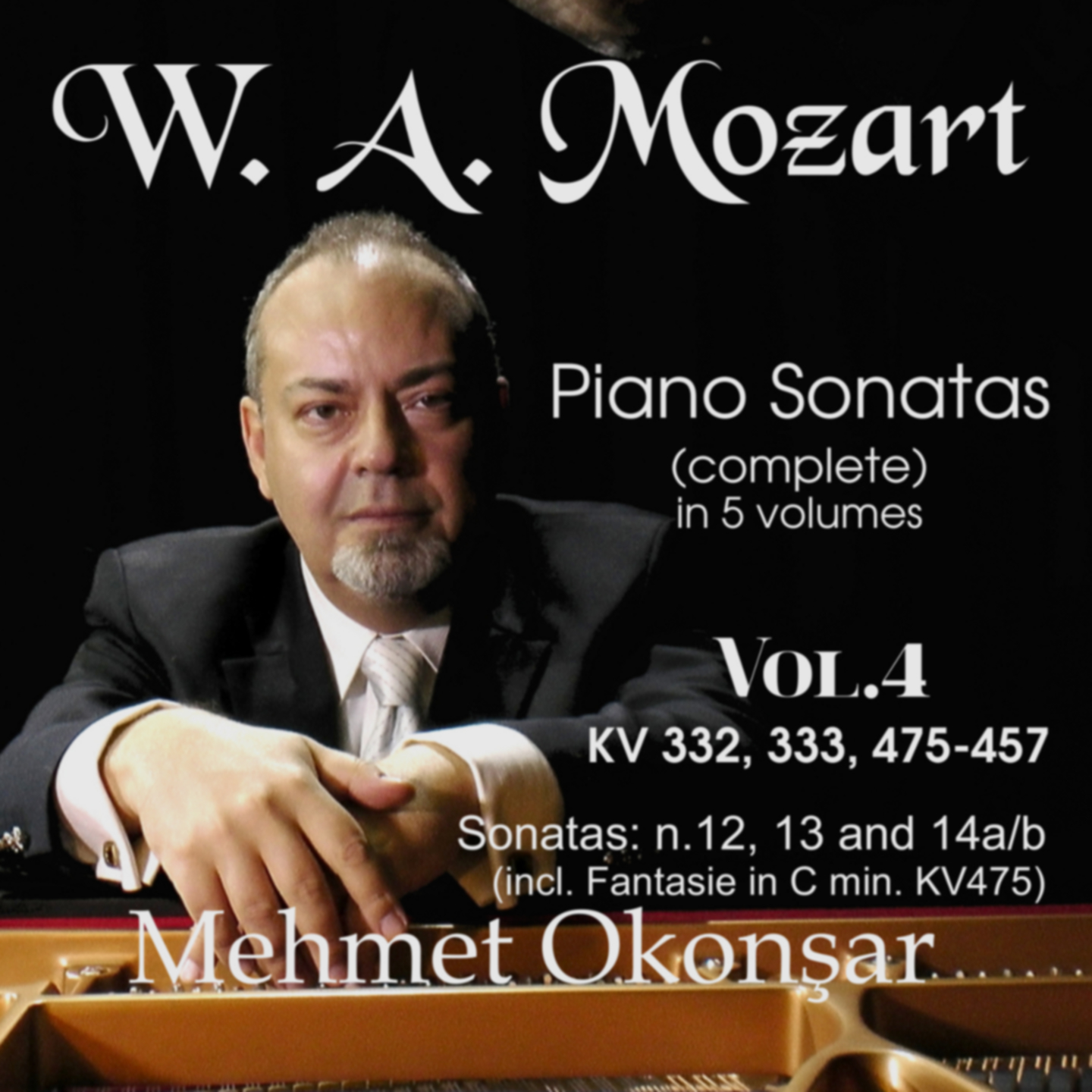
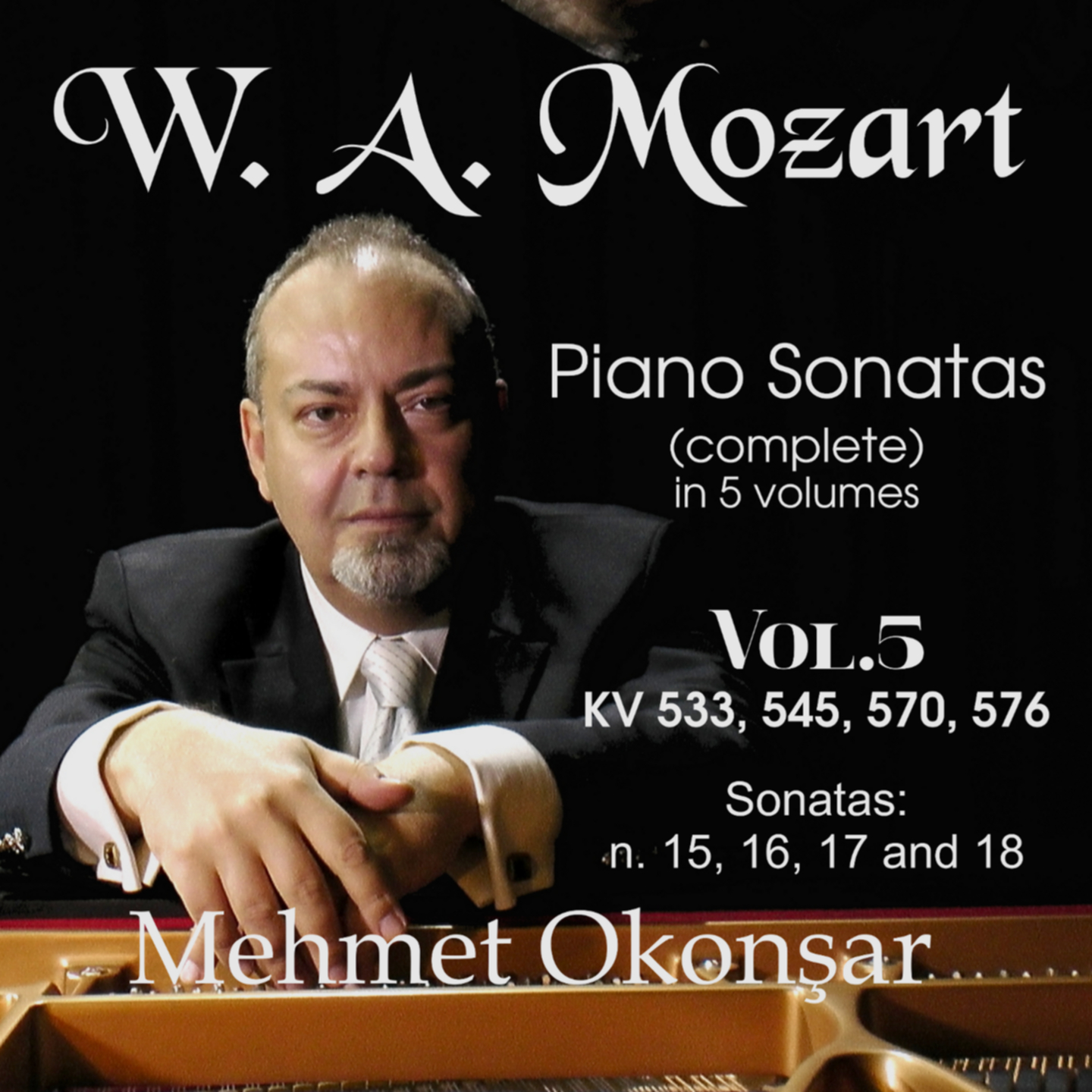

|
Mozart was a real great virtuoso of the keyboard. Most of his keyboard works were composed for the piano-forte, only his first compositions were for the harpsichord. During 1770's the piano-forte was a very new instrument, only few decades old and its mechanics were continuously updated. Its fame was growing fast and it was going to replace the harpsichord at homes and "saloons" at the last years of the 18th. century. While in Augsbourg in 1763 Leopold Mozart, with his two children, met with the famed instrument builder Andreas Stein and purchased an harpsichord. Stopping at the same city in 1777, Wolfgang Amadeus visited again the Stein workshop and showed great enthusiasm for the "new" piano-forte"s. Towards 1775, Andreas Stein did built a new "escape" mechanism on his instruments' hammers and that mechanical innovation largely increased the sonic possibilities of the keyboard. With this new mechanical action design, the hammer was dropping down quickly after hitting the string and thus, it was possible to play again the same note very fast. Therefore trills and repeated notes were performed amazingly fast and easily. At the same time the instruments from Stein had a very clear and shining sound. Their basses were deep and profound. In a letter to his father, Mozart wrote in 1777: "I can make everything I want with the keys, the sound is always equal; it is neither harsh or too weak or inexistent it is level everywhere." It is for such an instrument that Mozart composed all his sonatas and concertos. That also shows the most important qualities of the technique required for the performance of his works: a crystal-clear clarity of the touch and a very natural expression of the melodic lines. According to C. M. Girdlestone ("Mozart et ses concertos pour piano", 1953) there are two ways of playing Mozart wrong. The first is to play Mozart "only" graciously, elegantly, soft and light and the second wrong way is to make it too brilliant. Actually the only characteristic which must be constantly present is the clarity, otherwise one must play his music "as it is", which means sometimes vigorously, graciously, delicately, joyously. Also sometimes with humour, sometimes dark. Wolfgang Amadeus Mozart (Salzbourg, January 27th., 1756, Vienna December 5th., 1791) was, with her sister Nannerl, the only two children who attained the adult age from the seven siblings of Leopold Mozart (1719-1787). Musician at the Court of the archbishop of Salzbourg, Leopold Mozart was the only teacher of Wolfgang Amadeus. Soon aware of the exceptional musical gifts of his son, Leopold decided to expose his son, together with his daughter at the major cities of Europe. As early as six years old, in 1762, Wolfgang with his sister and father is on the roads with exhausting trips and concert tours through Munich, Den Haag, Brussels, Amsterdam, Paris and London. The gather great successes. In London, the child Mozart will be greatly influenced with Johann Christian Bach. In Milan, 1770, following the advice of Sammartini, his first "serious" opera will be staged "Mitridate , Re di Ponto". In Bologna he studies counterpoint with Padre Martini. After a short stay in Salzbourg he returns to Italy in 1771 and 1772. In Milan there are the premieres of his operas "Ascanio in Alba" during the summer of 1771, and of "Lucio Silla" in December 1772. They are real great successes. Back to Salzbourg in 1773, he is "konzermeister" of the court of the prince-archbishop Hieronimus Colloredo. He will always conflict with that newly enthroned prince. In 1777 he is deeply impressed with Mannheim, one of the very important artistic cities of Germany, specially with the orchestra of the city. This orchestra, unusually rich for the epoch is also one of the best of Europe. Mozart returns to Paris in 1778 with the hope of rehabilitating his early success in the French capital. This trip bereaved by his mother's sudden death will remain as one of the darkest periods of his entire, short, life. He got no success but just contempt and disinterest. Back to Salzbourg in January 1779 he is the organist of this arch-bishop court who he loathes. The tension between Mozart and the court grows and he is harshly fired on July 8th., 1782 after a violent dispute. Mozart then moves to Vienna, on July 16th., 1782 the Die Entführung aus dem Serail, K. 384 is premiered. He marries Constance Weber the same year. According to Alfred Einstein, Mozart's feeling of loneliness as an artist, his quest for a warm and sincere friendship who he always missed are the profound motivations of his joining the Free-Masonry at the year 1784. This is the most important event of the last period of his short life. From then on, while always enjoying the opera, he composed a number of solemn and beautiful works for the Masonic Lodge. Even though his big successes in Prague with Le nozze di Figaro, K. 492 (1786) and Don Giovanni, K. 527 (1787) his last years, so full of masterworks, will be tragic on moral and material aspects. Getting more isolated as an artistic, his health starts to decline rapidly and his material situation worsens fast. Despite the relative good reception of Cosi fan tutte, K. 588 (1789) which is followed by the triumph of Die Zauberflöte, K. 620 (1791), Mozart passes on December 5th., 1791 leaving his Requiem unfinished. Not counting his early attempts to the genre, Mozart headed for the sonata form relatively later in his creative life. The sonatas, K.6 to K.9 published as "Sonatas for the harpsichord with an optional accompaniment of violin, by J.G. Wolfgang Mozart from Salzbourg aged seven" are followed in 1765 by six sonatas, again with optional violin or flute part: K.10 to K.15. Same year six new sonatas and a series of variations preceded what we know today as his "real" piano sonatas. There are 18 of them starting from K.279. It should be noted that each series of Sonatas are separated by a relatively long period of time. The first six Sonatas (K. 279 to K.284) are from 1774, the next seven (K.309 to K.311) and the ones K. 330 to K.333 are composed three to four years later: between 1777 and 1778. From 1778 to 1784 Mozart did not compose any Sonata except the one in C minor K.457. During this lap of time he concentrates on other forms, specially piano concertos. Simultaneously, some of his most beautiful symphonies are from the same epoch: the "Haffner" and "Linz" as well as the magnificent "Symphonie concertante" for violin and viola, K.364. In 1782 he composes string quartets and make a tremendous success with the "Die Entführung aus dem Serail". The following year, the apex of his religious music: Great Mass in C minor, K. 427 is performed. The last series of piano sonatas: K.535, 545, 570 and 576 are composed after this period of intense creativity between 1788 and 1789. All sonatas by Mozart are in a three-movement form. The traditional formal structure of the classical sonata: a first movement with two contrasting themes followed by a slow movement and concluded with a Rondeau or similar fast and brilliant section is applied in almost all his piano sonatas. For three of his sonatas Mozart changes that formal scheme: the Sonata in E-flat major K.282 starts with an Adagio followed by two menuettos and a finale, Allegro; the sonata in D major K.284 starts with an initial Allegro but is followed by a mid-movement named "Rondeau en Polonaise" and the ending is one Andante followed by twelve variations. Finally the famous "Turkish March" sonata in A major K.331 starts with an "Andante grazioso" followed by six variations, the middle movement is a Menuetto and the finale is again a Rondeau: the famous "Alla turca" (Turkish March). Mozart was not an innovator in the genre of the piano sonata like Beethoven was. His sonatas do not encompass his entire career and are not among his most important works. Yet in each of his "series of sonatas" we met with a composer in another stage of his creative life, a composer who already created the most significant works on that particular stage. Series one: Sonatas from K.279 to K.284: The series of six sonatas K. 279 to K. 284 starts the entire series of 18 piano sonatas by Mozart.The first five are from 1774, Mozart resides then at Salzbourg and he is to take a trip to Munich, there he will compose the D major one K. 284 the only sonata of the series which is going to be published during the lifetime of the composer. Those sonatas somewhat well known by younger pianists are actually not "easy" pieces. A strong influence from Haydn's sonatas N. 21 to 26, published about the same time can be spotted. Specially a sharp resemblance between the sonata in F number 23 by Haydn and the K.280 sonata by Mozart can not be missed. Simultaneously the effect of Carl Philipp Emmanuel Bach is visible specially in the slow movements and the opening bars of fast movements, for instance the beginning of the sonata in G major K.283. A strong and unmistakable "style galant" shows a composer perfectly "in tune" with the "Salzbourg way of life" of the time. Sonata in C major K.279 The starting Allegro in 4/4 is one extremely brilliant movement, according to Alfred Einstein an improvisatory style is detected specially with the running lines of the right hand. The development starts unsuspectingly in the key of G minor and modulates with a great deal of expressiveness. The re-exposition is ornamented with many interesting variations in the thematic materials. The F major Andante is a gracious aria decorated in its middle section with elegant triplets. The 2/4 finale, Allegro, is again in the sonata form with two themes. The first of them with fast lines is less developed than the second with repeated notes which dominates the development and recapitulation sections. Sonata in F major K.280 The Assai allegro in 2/4 is based on two themes separated by a section in triplets which will also serve as the starting point of the development. The slow movement in F minor in 6/8 is the only slow movement in all 18 sonatas in a minor key. The movement is based on a theme in "sicilienne" form with an almost pathetic melancholy. Sonata in B-flat major K. 281 A rigorous sonata form in 2/4 which is slightly more extended than the previous sonatas. Both of its themes are very contrasted and the rhythmical variety within the movement is constant. The Andante amoroso in E-flat major, 3/8 exhibits a gracious and refined melody. The sonata ends with a Rondo, Allegro in 2 extremely elaborated around its joyful theme. This movement exhibits the mastery of the young composer. An added tension is built with the second section in G minor. Sonata in E-flat major K. 282 Unusual sonata which begins with an Adagio in 4 whose lyrical and melodic motives, sometimes tormented, shows the influence of Johann Christian Bach. In the middle part two menuettos bring a delightful grace and a mono-thematic Allegro in 2/4 concludes the piece. Sonata in G-major K. 283 Both themes of the starting Allegro in 3/4 have the gracious beauty of Johann Christian Bach. Mozart takes a step forward by beginning his development with a new motive. The C-major Andante is in three parts with in the middle a dark section in c-minor. The sonata ends with one exuberant finale as Presto in 3/8. Sonata in D-major K. 284 Commissioned by the Baron van Durnitz who was an excellent pianist (hence the title Sonata Durnitz) this large piece is the most beautiful and ambitious one of the series. Mozart wrote that this particular piece "sounded incredibly well on the piano-fortes by Stein". He was often performing it and probably did find it superior to the previous ones since he had only this one published among the series. The Allegro in 4/4 is as customary based on two contrasting themes. With its peculiar unison playing the first theme has all the strength of a concerto or symphony tutti. The development is rather in a free-form. With bright runs of passionate 16th notes spreading to both hands. The simple and naive theme of the Rondeau en polonaise, titled in French, Andante in 3/4, recurs with more ornamentation each time. The series of variations which makes for the last movement is of such a large scale unheard of in a sonata movement. A new series of seven sonatas are composed between 1777 and 1778 during Mozart's extended stay in Paris. Those are the sonatas K. 309-311 and K. 330-333. Enthusiastic with the sound of the pianos by Stein discovered in Augsburg, at the same time under the influence of the musicians of the Mannheim tradition, Mozart includes in this new series of sonatas numerous orchestral effects in his piano writing. In Paris he (re) discovers the music by Schobert, passed away 11 years earlier; he also meets Johann Christian Bach also traveling in this city, with delight. Beside the joined influences of Schobert and Johann Christian Bach the "Paris sonatas" have all a tragic side as well. The deception and sadness which never left Mozart during his stay in Paris show though each of those sonatas. Sonata in C-major K. 309 Starting with Allegro spirito the movement, according to Einstein, reminds us of a transcription of one Salzbourg symphony to a Stein piano-forte. Both themes are sharp and clear and the development which extends on the first theme goes towards dramatic minor-key regions. The Andante, quasi un poco adagio in F-major, is a mixture of the variation and rondo forms. Each occurrence of the theme is with some variations and new ornamentation. The large Rondo, Allegretto is a happy concluding movement somehow in the style of a finale of a concerto. Sonata in A-minor K. 310 Composed in Paris, 1778, the Sonata in A-minor K. 310 is a dramatic piece. The Allegro maestoso is full of tragic effects and harsh harmonic clashes. This gets to an apex when in the development section the tension is raised with shocking dissonances. Despite the smiling beginning of the Andante cantabile con espressione most of the middle movement remains also tragic in general feeling. The final Presto in one of the rare rondos composed in a minor key. The poignant atmosphere remains constant. Sonata in D-major K. 311 A sonata of brilliant virtuosity in a "divertimento" style. In addition to the two usual themes, Mozart adds a third one in the Allegro con spirito and develops it with refreshing dissonances and chromaticism. The Andante con espressione in G major unveils as a serenade on several themes followed by a Rondo, Allegro in 6/8 with unleashed gaiety and shining virtuosity. Sonata in C-major K. 330 Beneath its naive aspect the Sonata in C-major K. 330 shows a remarkable melodic inventiveness. The Allegro maestoso is based on numerous motives which are not present in the short development which exposes others. The F major Andante cantabile is new in the series because of its "lied" form which comprises a center section in the minor key. The charming finale Allegretto is like a rondo elaborated as a sonata with multiple themes. In 1784 Mozart added a short coda to this sonata before its publication. Sonata in A-major K. 331 One of the best known sonatas along with the C-major one (K. 545) is the so-called "Turkish march" sonata in A-major K. 331. It is a free form work and is the only one which does not include a typical "sonata allegro". By their spirit the three movements are a sort of hommage to France, a country who actually did not welcomed Mozart. The beginning Allegro is replaced by a theme and variations. The theme, Andante grazioso is taken from a German lied. Very much "French" by its peculiar rhythm it is nevertheless all Mozart by its harmonization. In its variations which include a minor one and an Adagio one, Mozart deploys a real virtuosity. The Menuetto with its Trio in D major is a noble and grand piece. Is is also elaborated with great liberty, "a la française". With the most celebrated "Alla turca, Allegretto" ends this sonata obviously more French than Turkish. Sonata in F-major K. 332 The Sonata K. 332 is a rather transparent and modest work. Starts with an Allegro where both motives are particularly melodious and expressive. The Adagio is also made of two themes. The magnificent Assai allegro finale is both a brilliant rondo and a sonata movement with two themes by itself. The most shining virtuosity is omni-present right from the beginning of the movement. Sonata in B-flat-major K. 333 Probably finished in Strasbourg, 1778, the Sonata in B-flat-major K. 333 announces a come back to the classical sonata form as structured by Johann Christian Bach, the old friend with whom Mozart met in Paris few weeks before. This unusually elaborated and lengthy work appears at first as a gracious and relaxed introduction. But soon develops into a brilliant, virtuose, concerto-like movement. Within this initial Allegro, the melodic elaborations are very close to ones of Johann Christian Bach. This is in level with the most beautiful pages, for instance among the Sonatas op.17 of J.S. Bach's eldest son. However Mozart's themes are richer and more elaborated. Most of the development is in minor keys. The Andante cantabile in E-flat major takes a step further J. Christian Bach's style. Its central section, with its highly dramatic chromaticism and dissonances is unique. The Allegretto grazioso, a joyful Rondo is also very original and stylistically advanced. There are a few concerto-like cadenzas in this closing movement. Unlike the previous two series of sonatas, the following group of five sonatas (K. 457, 533, 545, 570 and 576) is not a homogeneous ensemble of stylistically connected works. They are very distant from each other, furthermore during a period of ten years (from 1778 to 1788) Mozart did not compose a piano sonata except for the C-minor one K. 457 Fantasie in C-minor K. 475 The Fantasie in C-minor K. 475 is finished in Vienna in May 1785, few months after the Sonata in C-minor (K.475). They are to be published as "Opus XI" in the same city, both dedicated to Theresa von Trattner. In the order as they are published the Fantasie comes before the Sonata. There is an intimate connection between the two. Same feelings, same exuberance, drama and same moments of tenderness. The extraordinary improvisatory genius of Mozart is presented together with most audacious harmonic liberties. The amazingly rich variety of musical materials employed in such a short time, combined with most audacious harmonizations are typical aspects of Mozart's genius. After the dark and tragic Adagio, lyrical and fast-peaced sections are alternated. A short Allegro with an intense emotional content connects to an Andantino introduced with two large cadenza-like scale runs. Follows a highly lyrical episode which itself connects to an agitated Piu allegro which gradually slows down and gets back to the dark introduction motives. Sonata in C-minor K. 457 Composed in October 1784, few days after the concerto in B-flat major (K. 456), dedicated to his pupil Theresa von Trattner, spouse of the music publisher, this sonata could be the most beautiful of the entire set. It has been published by the composer along with the Fantaisie in C-minor K. 475 composed in May 1785. This three movement Sonata is a piece of loneliness and passion which, according to Hermann Abert, "concludes with a dark resignation". It depicts a dark picture which contrasts with the Concerto in B-flat major, piece of extreme delicacy. Girdlestone sees two waves of feelings crossing all through the piece: "one brilliant and somehow superficial attitude and the other full intimacy as well as anxiety." The first movement, Molto allegro, starts with a theme in unison. This first theme will dominate the development section. Again this theme will serve as a stretto in the coda. The Adagio, in E-flat major, is captivating by its inwards serenity. Both a rondo and an "allegro of sonata" the last movement: Assai allegro, exposes a syncopated theme alternated with a straight rhythmical one. This last movement is even more tragic and desperate than the rest of the sonata. George de Saint Foix wrote: "one can not find in the whole music for the piano or in music in short, anything which can be as much "Beethovenian" before Beethoven as this sonata." Sonata in F-major K. 533 Composed in January 1788 this sonata had primarily only two movements. Mozart added a to it a rondo in F-major (K. 494) composed in 1786 as a finale. The Allegro is built on three themes which emancipate in a development section with audacious harmonizations and counterpoint. Sonata in C-major K. 545 Unjustly nicknamed "easy sonata" this well-known sonata is composed in 1788. It will be published after the composer's death. It was called "Petite sonate pour debutant" by Mozart himself. Calling this sonata "easy" is fallacious. It has many risky passages and requires a perfect mastery of the equality of touch. Sonata in B-flat major K. 570 Alfred Einstein wrote about this sonata composed in February 1789: "this may be the most balanced one, the ideal of the classical piano sonata". The concise Allegro is a singing, melodious movement. The Adagio in E-flat major is almost like one Rondo. The "actual" rondo: Rondo, Allegretto is very humorous. Sonata in D-major K. 576 This sonata was composed in Vienna during the summer of 1789. The starting Allegro in 6/8 is a splendid work with most refined developments in canonical forms. This gets more emphasized during the development. The Adagio in A major is full of ornamentations. It is made of four expositions of the one single theme with intermediate sections composed with audacious harmonic developments and modulations. The Finale, Allegretto in 2/4 is characteristic with its left hand runs of triplet sixteenths. Its counterpoint work and harmonizations makes this ultime sonata a captivating work.
|
|||||||||||||||
| |
|||||||||||||||
| |
|||||||||||||||
|
|
|||||||||||||||
|



